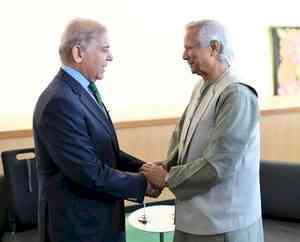75% of employees today want to be in office at least once a week as compared to 52% in October 2020: JLL
The JLL survey indicates that a workplace that cares about health and well-being is now the number one priority for employees

Mumbai, September 1, 2021: Employees want more balance in their working patterns, with a hybrid work model and flexibility being key. Even as the office retains its place in a working set-up being reshaped in a post-COVID world, aspirations are increasing from the modern workplace while homeworking is still preferred, according to JLL’s latest Workers Preference Barometer for India.
91% of the respondents favour flexible working hours. The priorities of the workforce have undergone a shift with an empathetic employer and work-life balance being their key asks, even ahead of a comfortable salary. The pandemic has prioritized working in an environment that puts health and well-being at the forefront.
While the workforce shifted seamlessly to Work From Home (WFH) due to the pandemic for over a year now, the prolonged and enforced homeworking has brought to the fore the need to “connect’ with colleagues, while more traditional levers such as ‘purpose in the job’ and ‘visibility’ are not the top priorities they used to be, finds the survey.
The social interactions that an office space provides are being sorely missed, to the extent that 41% of the workforce is craving ‘real’ human interactions with colleagues while 31% of them miss a change of scenery. Amongst the most missed aspects of the weekly routine, coffee and socializing in social activities, personal time for relaxing and spending time with family stand out.
India prefers homeworking, but balance in working patterns has emerged as a key theme. 79% of the workforce wants to work remotely from home at least once in a week, and this number goes up to 89% when a third-party place of work is added. An ideal working week, post Covid, seems to be one where employees spend three days working remotely and two days in office, with office remaining a key element to the aspirational working regime. According to the survey, 21% of the workforce does not want to work from home in the future, as opposed to 16% in October last year. However, flexibility is becoming more attractive. 91% of the workforce want to choose their schedules and working hours as per the latest results, up from 69% as per the October 2020 survey results.
The hybrid work environment retains its appeal, but more people want to return to the office at least once a week, says the survey findings. Almost 75% of the surveyed employees want to work from office at least once a week compared to 52% in October 2020. Significantly, still 79% employees today want to work from home atleast once a week compared to 84% in October 2020, indicating that homeworking as part of flexible work patterns is a key desire.
The survey also brings to the fore renewed aspirations from the workplace of the future. This will act as a barometer for the employers and occupiers to understand changing needs from the workplace and workplace strategies, which will provide a more balanced work-life pattern to employees as they aspire to return to purpose-led offices in the future.
“The offices of the future will have to be more human-centric, putting health and well-being at the forefront. Almost 60% of those surveyed believe that a workplace that promotes a healthy lifestyle and safety is a key priority. There is a greater understanding and need for work-life balance amongst employees now. We are also seeing the need for human connection gaining prominence amongst employees as they crave social connections and emotional engagements in the workplace. Companies will need to be mindful of the requirement for more flexible work patterns even as they are putting greater focus on the well-being of employees and extending support to help employees navigate an array of health challenges,” said Radha Dhir, CEO and Country Head, India, JLL.
JLL’s research shows that more than half of respondents feel overwhelmed by a huge mental load and are worried about their job security, while majority of young parents have expressed that they have many personal and professional responsibilities to cope with which is intensifying the feeling of being overwhelmed.
‘Purpose-led offices’ are the new future
According to the survey, 91% of employees who are highly satisfied with their office environment strongly miss their offices. However, office satisfaction rate has also dropped as employees now have renewed expectations of their office environment. While there is a dip in productivity levels at home, a significant number still feel more productive at home. But more employees are looking forward to “purpose-led offices” of the future.
“We have witnessed renewed demands of the workforce for the workplaces with employees’ rising aspirations and expectations. Employees are more demanding about what the office should offer them in the future. They are looking for a working ecosystem that facilitates flexible work arrangements, physical and financial safety, and a desire for spaces that create a strong sense of community and culture,” said Dr Samantak Das, Chief Economist and Head of Research & REIS (India), JLL.
.
“As we are emerging from the effects of the pandemic, it has become essential to create a human-centric framework and cater to employees’ aspirations of a healthy and sustainable workplace while augmenting it with innovative technologies in line with the evolving needs of employees,” he further added.
A global research survey of over 3,300 respondents was undertaken to create this barometer which was consolidated over time with two previous surveys over the whole year of the pandemic starting March 2020 and repeated in October 2020 and March 2021.
In India, all respondents were over 18+ and working professionals and working with companies with at least 100 employees or more. Over 90% of the surveyed were employed with private companies with big corporates comprising 70% of these and SMEs forming the rest. Additionally, quotas on age, managerial responsibilities, company size and industry were used as well to get a more homogeneous profile of employees participating in the survey.



 cityairnews
cityairnews 








